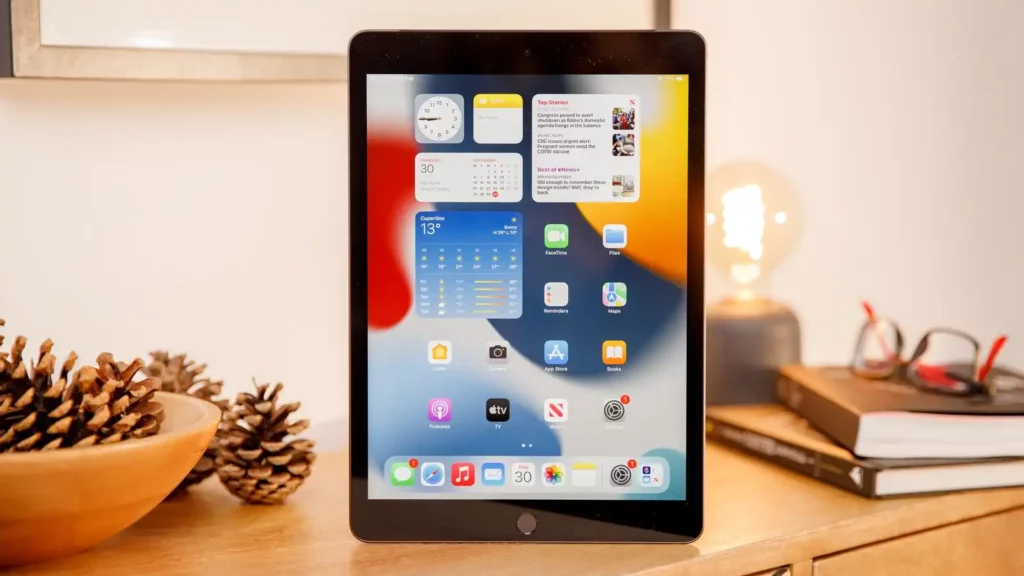New Apple Ipad Leak Reveals Biggest Upgrade To Entry-level Device Ever
Apple is expected to release an update to its iPad range in September or October-meaning an unveiling of the new iPad may take place as soon as less than a month from now, but this is the most likely timeframe.
It has now been revealed that a new leak shows what the next entry-level iPad could look like in terms of its design.
The site has received CAD renders of the upcoming tablet, according to a report.
new Apple Ipad Leak Reveals Biggest Upgrade To Entry-level Device Ever
Taking a closer look at these renders, if they are indeed genuine, they show significant changes over the current iPad, which are arguably the biggest changes made to the entry-level iPad in its history. Here is a picture of what the renders look like.
August 7 update. According to Mark Gurman in his latest Power On newsletter, the decision to delay the release of iPadOS 16 was the right one to make.
It was Gurman who first revealed there would be a surprise delay to the software a few days ago, with details about exactly what that delay would entail.

He has now gone on to explain a bit more about what he is doing and says it makes a lot of sense that he is doing this.
It is really exciting to see Stage Manager in iPadOS 16 and I agree with Gurman that it is really exciting.
Since the iPhone and iPad are different products and have their own operating systems, it is no surprise that they have their own operating systems.
It should still be noted that this will be the first time that a new version of iOS and iPadOS are released at different times in the same year.
It has been noted by Gurman that Apple typically releases its products in October, although last year’s entry-level iPad and the latest iPad mini were released earlier than expected in September 2021.
The iPad and iPad Pro are said to be due for an October unveiling this year, so it may not be so important to delay the release of iPadOS 16 until then.
The interesting thing about Gurman’s argument is that he posits the possibility that this change may not be a one-off. According to him, Apple plans to shake up its approach this year, and perhaps in the coming years as well. A new software update for the iPhone, iOS 16, along with a new software update for the Apple Watch, watchOS 9, will be released simultaneously in September. Within a month, iPadOS 16 will launch alongside macOS Ventura, followed by iPadOS 16 about a month later.
It is also worth noting that there is another reason why this logic makes sense: the new feature I mentioned above, Stage Manager, is not just available for some models of iPad, but is also available for Macs. In my opinion, it would be a good idea to release macOS and iPadOS simultaneously.
However, even though they are distinct, there are many ways in which the iPhone and iPad overlap, so delaying new features common to both devices, such as unsend and edit-after-sending for Messages and Mail, could cause confusion for both consumers.
While what seems to be the primary reason for the delay (the need for more time for Stage Manager) only affects the iPad Pro and iPad Air, a later release will affect all iPad users, including those who own the new entry-level iPad described below.
In other words, if there is one thing we can be sure of, it’s that this indicates the next generation of iPad hardware won’t be released until October this year, not September as it was last year. Usually, Apple does not provide this kind of information ahead of time, but it is clear to me that the iPad and the iPad Pro are at least two months away from being released.
Now, back to those revelations about the next iPad.
Flat-Edge Design, At Last
The entry-level iPad looks quite different from the rest of the iPad range compared to the other iPads. With the exception of the Air and mini, the iPad Pro, Air, and mini all have flat edges instead of the curved back the iPad has had in its entry-level model since 2010.
According to the renders, assuming the renders are true, this new tablet will bring the same industrial design language to bear on the entire line of tablets. In light of this, I would like to ask another question…
Compatibility with Apple Pencil 2?
Due to the flat edges, this is physically possible, but since there is no magnetic charging panel on the renders, I don’t think it’s likely. Apple Pencil is available in two different versions, as you are probably already aware.
It comes with a pop-off top that exposes a Lightning connector that allows you to charge the Pencil using the Lightning port on the iPad. To pair and charge the iPad Air, iPad Pro, and iPad mini, the second device snaps magnetically onto the side of the tablet.
It is possible that the new iPad will have a magnetic connector and the first-generation Pencil will disappear, or it will continue to be only compatible with the entry-level tablets as it is currently.
As a result, this leads to another issue that needs to be addressed.
Lightning or USB-C?
I have another conundrum for you. Rumors have circulated in recent weeks that the next iPad would switch from Lightning to USB-C for connectivity, just like the rest of the iPad range.
I think it is safe to say that if that is the case, then it is to be assumed that Apple will switch over to the Apple Pencil 2. I cannot imagine Apple re-imagining the original Pencil with a USB-C connector on top of it.
In the alternative, maybe those USB-C rumors aren’t true (Gorantia says it’s not clear either way), and there won’t be any change to the Lightning connector, in which case I think the first-generation Pencil will be the most popular.
Bigger Display But Square Corners
It should be noted that all of the other iPads have displays with gently curved corners, which are in line with the curved edges of the tablet itself.
In spite of this, the renders show that the screen will have sharp, right-angle corners. As a result, it appears that the tablet will have a larger display than the smartphone.
In order to increase the size of the iPad screen, Apple has gradually increased the size of the display from its original 9.7-inch display to its current 10.2-inch display.
It seems likely to me that Apple will increase the size of the iPad by shrinking the bezels and will put a 10.5-inch screen here, similar to an earlier version of the iPad Air.
In spite of this, there does seem to be one big design element that won’t be changing any time soon.
Touch ID Home Button Is Here To Stay
According to the renders, unlike the iPad Pro with Face ID or the iPad Air and iPad mini with Touch ID mounted in the power button, the next iPad will have a Touch ID home button on the front, as opposed to the one on the back.
Since we already know that the home button could be hidden away in the power button, which would make the iPad an all-screen device like the Air, the only conclusion is that the home button would remain in order to keep costs as low as possible.
In my opinion, this isn’t a bad thing at all. The entry-level iPad is an outstanding value at $329, and the next model will remain so even if the sticker price goes up to justify the new design, especially if the predicted A14 Bionic chip is included in the new design.
Quad Speakers?
The render shows a pair of speaker grilles at the top and bottom of the screen, which suggests that there are four speakers in total.
As I mentioned earlier, this may be part of Apple’s strategy to bring Spatial Audio to more of its devices, which is not available on the entry-level model at the moment.
Rear camera panel
It seems that the rear camera will continue to be a single lens, as it is today, but in a raised panel, according to the render.
It goes without saying that this is not entirely unexpected since the dimensions (248.62 x 179.50 x 6.98mm) show a thinner tablet than what we have now. In addition, it looks like it’s going to have a flash for the first time as well, so that’s a big plus.
The Bottom Line
Despite the fact that some people will be disappointed that the next entry-level iPad won’t be an all-screen tablet, it’s important to remember just how good an iPad is for the price.
Combined with better speakers, a classy-looking design, and a bigger display, it’ll be an even more remarkable value as a result of its improvements.


